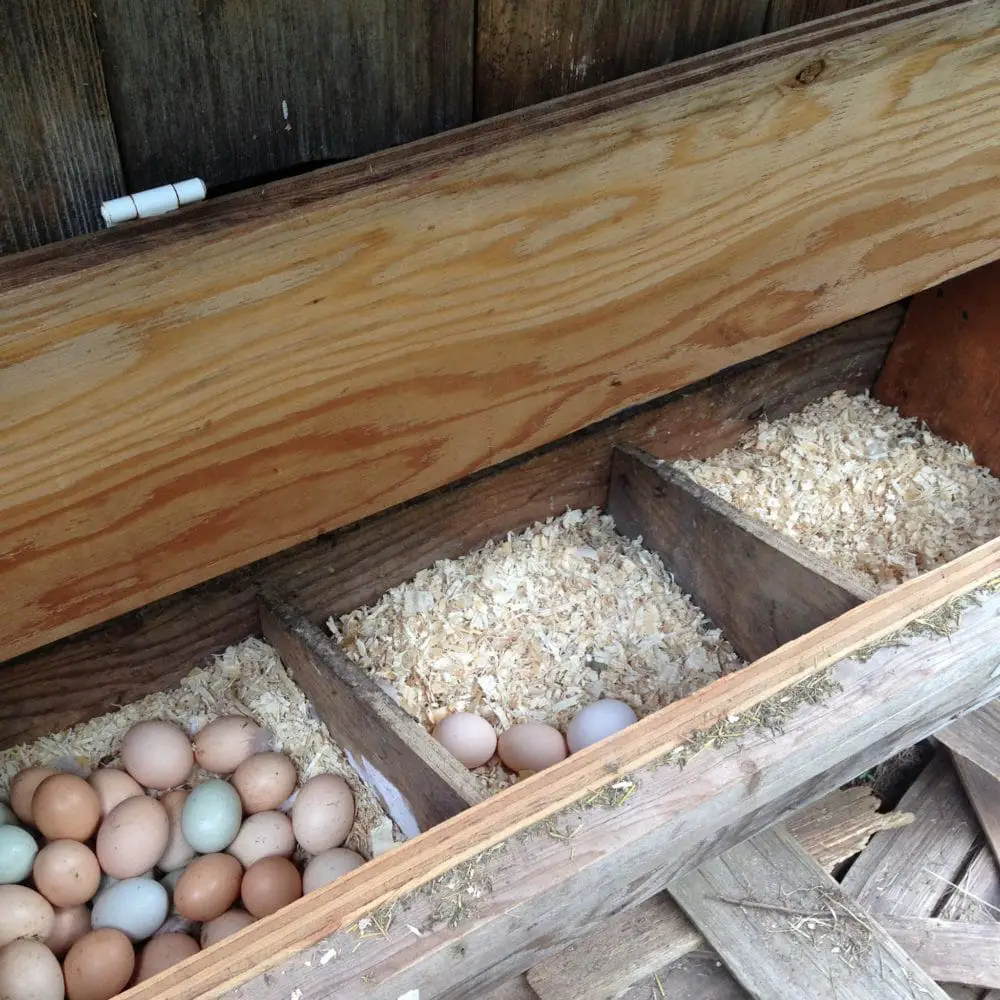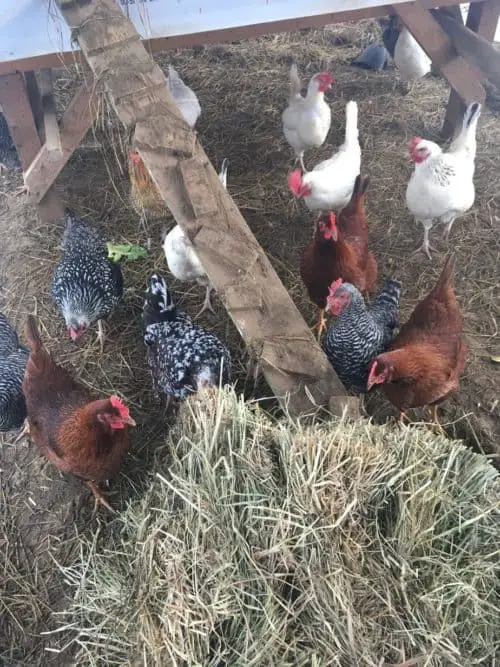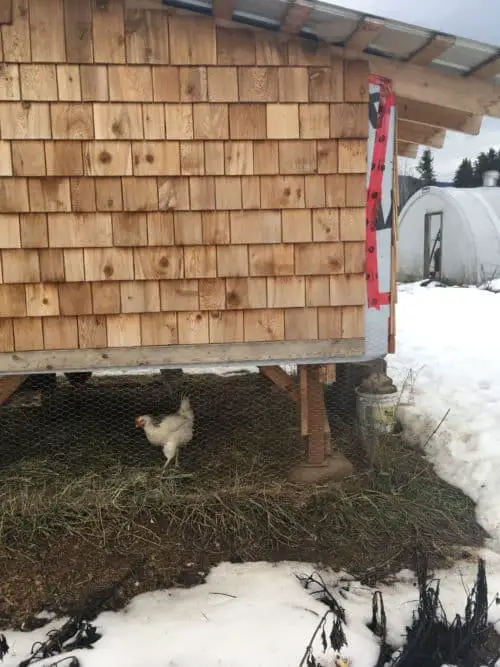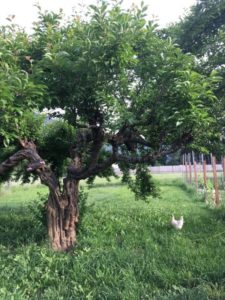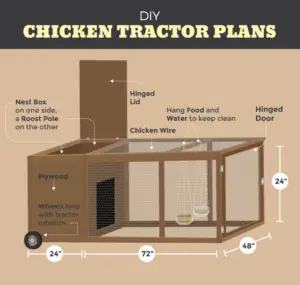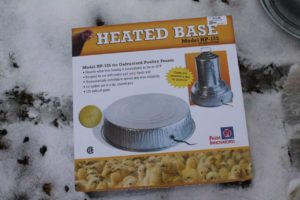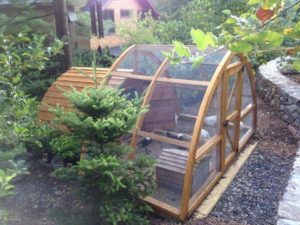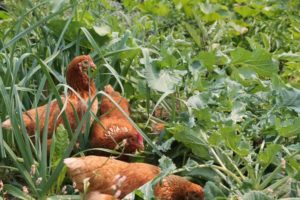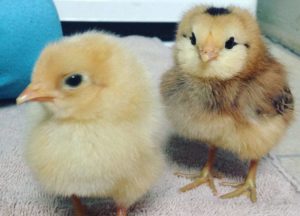When you keep backyard chickens your chicken coop will need chicken bedding. Cleaning out the coop is probably your least favorite aspect of chicken keeping.
Changing the chicken bedding is also very important to do on a regular basis because it reduces respiratory problems, chicken coop pests, and helps to have clean healthy chickens and eggs.
Chicken bedding also helps to collect the chicken manure, offers a soft landing, and is very important during the winter months.
Having used two of the most popular choices, pine shavings and straw, I wanted to offer a review of both.
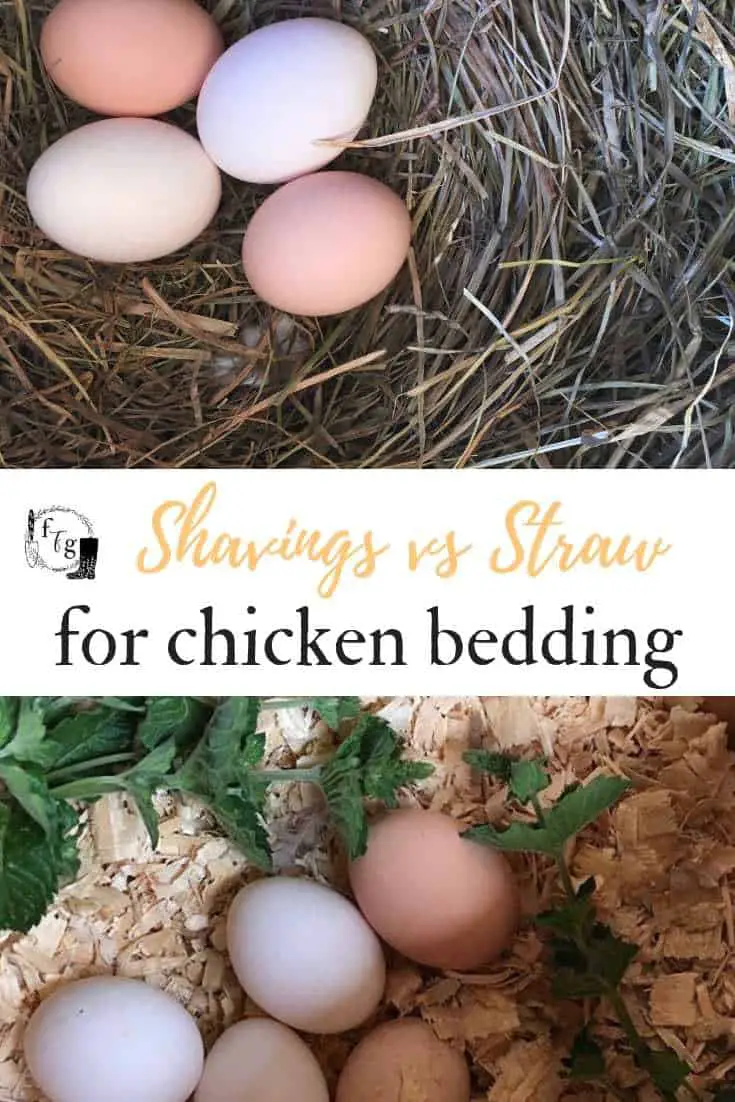
Chicken Bedding Options
When deciding the best chicken bedding to use, there are a few things to keep in mind. Your location might be a factor, as will price. Maybe you’re keeping urban chickens and have no access to straw. Often it’s easier to find pine shaving bales (& to transport it wrapped in plastic!) than a bale of straw.
- Pine shavings (Cedar oils are toxic and should never be used. Don’t use sawdust as it’s too dusty)
- Straw
- Hay (can go moldy easily because it’s green)
- Shredded paper
- Grass clippings
- Leaves
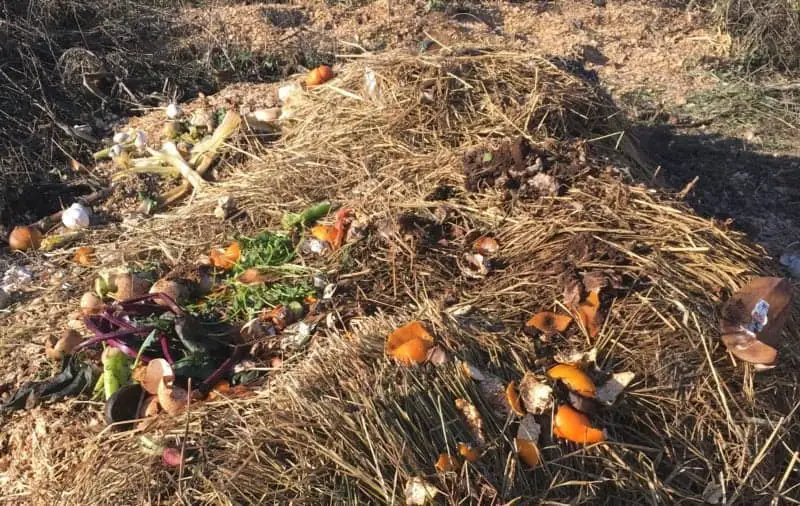
Things to keep in mind when choosing the best chicken bedding:
- Price- how much does it cost in your area?
- Can you order one bale or do you have to order many?
- Where are you storing the extra bales?
- Are you composting it afterwards? I like using multiple bins for this.
- Size of your chicken coop. Some might not be practical such as shredded paper for large coops.
- How are you transporting it?
- Do you need it delivered to your urban or large homestead?
- How old are your chickens? Are they baby chicks?
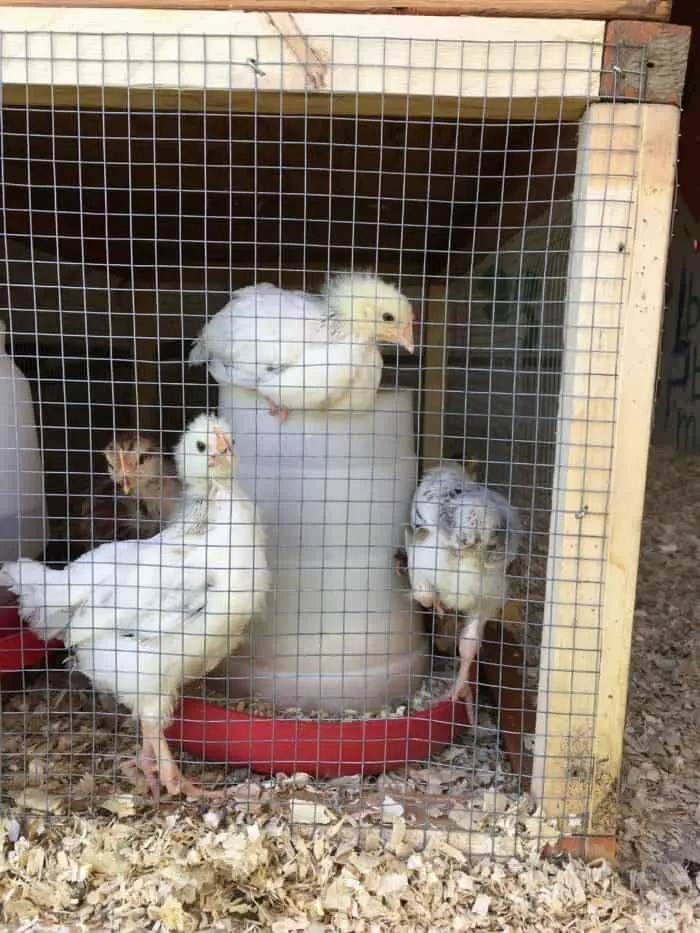
Best Chicken Coop Bedding
Having kept chickens for 5 years now, we’ve used both straw and pine shavings. I wanted to offer a review of both and the pros and cons of each. We’ve used both for at least 6+ months, and have used both for the winter deep litter method. Remember this review is based from my experience, you might have a completely different preference. I’d love to hear about your choices and experiences in the comments.
Pine Shaving Chicken Bedding
First of all, I love how easy pine shavings are to buy and transport. We don’t (at the moment) have a large shed to keep abundance of straw. I keep a few bales in our unheated greenhouse during the winter but it’s not ideal. Almost every local pet supply store or farm store will carry pine shaving bales.
They don’t make a mess to transport and are cheap to buy.
The downside is that they’re often treated wood which can be a concern for your composting and garden soil. This became a concern for me so I searched for some un-sprayed local straw. I often added it to my garden paths as I was hesitant to allow it in our mostly organic composting. That being said, the valuable chicken manure wasn’t being used well. You also want to make sure that chicken manure has decomposed properly so there’s no e-coli and other harmful bacteria entering your garden.
So I love pine shavings, but was concerned about composting with it.
Straw Chicken Bedding
Straw can be harder to find if you’re in an urban setting. If you do have a large homestead and land, you often need to order in bales and have a place to store it. As we have a lot of elk here, our current storage wouldn’t work. I’ve found for our location in the mountains, bales of straw are the same price as pine shavings, or more expensive.
If you live in the prairies and can order many bales, straw can be a much cheaper option.
Un-treated straw will be fantastic for your compost. It can be harder to find un-sprayed straw however, so once again, you’re running into the problem of having non-organic compost. I managed to find some local un-sprayed sedge straw.
I would say one downside to straw was I personally found it harder to clean the coop.
The straw tended to clump up with manure and become heavy. This made lifting out certain areas (like under the roosts where there’s more poop) much harder than the pine shavings. Having used straw for our first winter using the ‘deep litter’ method I can’t say I’m a fan of the straw on the inside of the coop. I found the smell to be worse with the straw in the winter months. It seemed like the straw was decomposing or even going moldy. I’ve also found it’s ‘slightly’ easier for mice in the coop to be comfortable and hide in straw.
For underneath our covered run, which was designed for increased winter roaming, I much prefer straw bedding.
We always use pine shavings for baby chicks. I’ve read that straw can be too slippery for developing legs to walk on, although I haven’t honestly looked further into this. For the aspect of cleaning the coop, I prefer pine shavings. I prefer it especially with the deep litter method after a long winter of adding extra bedding. For the purpose of composting and decomposing for our garden soil, I prefer un-treated straw.
So what are we using?
Both! We use both these bedding choices depending on the time of the year. We’ve found that it’s hard to impossible to get straw during the spring and summer months for our location. I prefer shavings for the winter deep litter, it smells better in there too. I love having straw as a base in our covered run.
Do you have a preferred chicken bedding?

